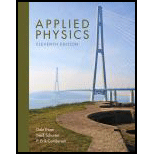
Applied Physics (11th Edition)
11th Edition
ISBN: 9780134159386
Author: Dale Ewen, Neill Schurter, Erik Gundersen
Publisher: PEARSON
expand_more
expand_more
format_list_bulleted
Textbook Question
Chapter 1.8, Problem 23P
Determine the precision of each measurement.
23. 70.00 m2
Expert Solution & Answer
Want to see the full answer?
Check out a sample textbook solution
Students have asked these similar questions
convert the following measurements (a only)
Read the setting on this metric micrometer scale graduated in 0.01mm.
rewrite the following using the given prefix.
6000000m =____________ Mm
Chapter 1 Solutions
Applied Physics (11th Edition)
Ch. 1.2 - Give the metric prefix for each value. 1. 1000Ch. 1.2 - Give the metric prefix for each value. 2. 0.01Ch. 1.2 - Give the metric prefix for each value. 3. 100Ch. 1.2 - Give the metric prefix for each value. 4. 0.1Ch. 1.2 - Give the metric prefix for each value. 5. 0.001Ch. 1.2 - Give the metric prefix for each value. 6. 10Ch. 1.2 - Give the metric prefix for each value. 7....Ch. 1.2 - Give the metric prefix for each value. 8. 0.000001Ch. 1.2 - Give the metric symbol, or abbreviation for each...Ch. 1.2 - Give the metric symbol, or abbreviation, for each...
Ch. 1.2 - Give the metric symbol, or abbreviation, for each...Ch. 1.2 - Prob. 12PCh. 1.2 - Give the metric symbol, or abbreviation, for each...Ch. 1.2 - Give the metric symbol, or abbreviation, for each...Ch. 1.2 - Prob. 15PCh. 1.2 - Give the metric symbol, or abbreviation, for each...Ch. 1.2 - Prob. 17PCh. 1.2 - Prob. 18PCh. 1.2 - Write the abbreviation for each quantity. 19. 28...Ch. 1.2 - Prob. 20PCh. 1.2 - Write the abbreviation for each quantity. 21. 49...Ch. 1.2 - Prob. 22PCh. 1.2 - Write the abbreviation for each quantity. 23. 75...Ch. 1.2 - Write the abbreviation for each quantity. 24. 15...Ch. 1.2 - Prob. 25PCh. 1.2 - Write the SI unit for each abbreviation. 26. 185 LCh. 1.2 - Write the SI unit for each abbreviation. 27. 59 gCh. 1.2 - Write the SI unit for each abbreviation. 28. 125...Ch. 1.2 - Write the SI unit for each abbreviation. 29. 27 mmCh. 1.2 - Write the SI unit for each abbreviation. 30. 25 dLCh. 1.2 - Prob. 31PCh. 1.2 - Write the SI unit for each abbreviation. 32. 27 mgCh. 1.2 - Write the SI unit for each abbreviation. 33. 26 MmCh. 1.2 - Write the SI unit for each abbreviation. 34. 275 gCh. 1.2 - The basic metric unit of length is ______.Ch. 1.2 - The basic unit of mass is _______.Ch. 1.2 - Two common metric units of volume are ______ and...Ch. 1.2 - The basic unit for electric current is _______.Ch. 1.2 - Prob. 39PCh. 1.2 - The common metric unit for power is ______.Ch. 1.3 - Write each number in scientific notation. 1. 326Ch. 1.3 - Write each number in scientific notation. 2. 798Ch. 1.3 - Write each number in scientific notation. 3. 2650Ch. 1.3 - Write each number in scientific notation. 4....Ch. 1.3 - Write each number in scientific notation. 5. 826.4Ch. 1.3 - Write each number in scientific notation. 6. 24.97Ch. 1.3 - Write each number in scientific notation. 7....Ch. 1.3 - Write each number in scientific notation. 8....Ch. 1.3 - Write each number in scientific notation. 9. 6.43Ch. 1.3 - Write each number in scientific notation. 10....Ch. 1.3 - Write each number in scientific notation. 11....Ch. 1.3 - Write each number in scientific notation. 12....Ch. 1.3 - Write each number in scientific notation. 13....Ch. 1.3 - Write each number in scientific notation. 14....Ch. 1.3 - Write each number in scientific notation. 15....Ch. 1.3 - Write each number in scientific notation. 16....Ch. 1.3 - Write each number in scientific notation. 17....Ch. 1.3 - Write each number in scientific notation. 18....Ch. 1.3 - Write each number in scientific notation. 19....Ch. 1.3 - Write each number in scientific notation. 20....Ch. 1.3 - Write each number in decimal form. 21. 8.62 104Ch. 1.3 - Write each number in decimal form. 22. 8.67 102Ch. 1.3 - Write each number in decimal form. 23. 6.31 104Ch. 1.3 - Write each number in decimal form. 24. 5.41 103Ch. 1.3 - Write each number in decimal form. 25. 7.68 101Ch. 1.3 - Write each number in decimal form. 26. 9.94 101Ch. 1.3 - Write each number in decimal form. 27. 7.77 108Ch. 1.3 - Write each number in decimal form. 28. 4.19 106Ch. 1.3 - Write each number in decimal form. 29. 6.93 101Ch. 1.3 - Write each number in decimal form. 30. 3.78 102Ch. 1.3 - Write each number in decimal form. 31. 9.61 104Ch. 1.3 - Write each number in decimal form. 32. 7.33 103Ch. 1.3 - Write each number in decimal form. 33. 1.4 100Ch. 1.3 - Write each number in decimal form. 34. 9.6 105Ch. 1.3 - Write each number in decimal form. 35. 8.4 106Ch. 1.3 - Write each number in decimal form. 36. 9 108Ch. 1.3 - Write each number in decimal form. 37. 7 1011Ch. 1.3 - Write each number in decimal form. 38. 4.05 100Ch. 1.3 - Write each number in decimal form. 39. 7.2 107Ch. 1.3 - Write each number in decimal form. 40. 8 109Ch. 1.3 - Write each number in decimal form. 41. 4.5 1012Ch. 1.3 - Write each number in decimal form. 42. 1.5 1011Ch. 1.3 - Write each number in decimal form. 43. 5.5 1011Ch. 1.3 - Write each number in decimal form. 44. 8.72 1010Ch. 1.4 - Which unit is longer? 1. 1 metre or 1 centimetreCh. 1.4 - Prob. 2PCh. 1.4 - Which unit is longer? 3. 1 metre or 1 kilometreCh. 1.4 - Prob. 4PCh. 1.4 - Prob. 5PCh. 1.4 - Prob. 6PCh. 1.4 - Prob. 7PCh. 1.4 - Which metric unit (km, m, cm, or mm) would you use...Ch. 1.4 - Which metric unit (km, m, cm, or mm) would you use...Ch. 1.4 - Which metric unit (km, m, cm, or mm) would you use...Ch. 1.4 - Prob. 11PCh. 1.4 - Prob. 12PCh. 1.4 - Prob. 13PCh. 1.4 - Prob. 14PCh. 1.4 - Prob. 15PCh. 1.4 - Prob. 16PCh. 1.4 - Fill in each blank with the most reasonable metric...Ch. 1.4 - Fill in each blank with the most reasonable metric...Ch. 1.4 - Fill in each blank with the most reasonable metric...Ch. 1.4 - Fill in each blank with the most reasonable metric...Ch. 1.4 - Fill in each blank with the most reasonable metric...Ch. 1.4 - Fill in each blank with the most reasonable metric...Ch. 1.4 - Fill in each blank with the most reasonable metric...Ch. 1.4 - Prob. 24PCh. 1.4 - Fill in each blank with the most reasonable metric...Ch. 1.4 - Prob. 26PCh. 1.4 - Fill in each blank with the most reasonable metric...Ch. 1.4 - Fill in each blank with the most reasonable metric...Ch. 1.4 - Fill in each blank. 29. 1 km = _____ mCh. 1.4 - Prob. 30PCh. 1.4 - Fill in each blank. 31. 1 m = _____ cmCh. 1.4 - Prob. 32PCh. 1.4 - Fill in each blank. 33. 1 dm = ______ mCh. 1.4 - Fill in each blank. 34. 1 m = _____ mmCh. 1.4 - Fill in each blank. 35. 1 hm = _____ mCh. 1.4 - Fill in each blank. 36. 1 cm = _____ mCh. 1.4 - Fill in each blank. 37. 1 cm = ____ mmCh. 1.4 - Change 250 m to cm.Ch. 1.4 - Change 250 m to km.Ch. 1.4 - Change 546 mm to cm.Ch. 1.4 - Prob. 41PCh. 1.4 - Change 35 dm to dam.Ch. 1.4 - Change 830 cm to m.Ch. 1.4 - Prob. 44PCh. 1.4 - Prob. 45PCh. 1.4 - Change 7.5 mm to m.Ch. 1.4 - State your height in centimetres and in metres.Ch. 1.4 - Change 43,296 ft a. to miles. b. to yards.Ch. 1.4 - Change 6.25 mi a. to yards. b. to feet.Ch. 1.4 - Change 5.94 m to feet.Ch. 1.4 - Change 7.1 cm to inches.Ch. 1.4 - Change 1.2 in. to centimeters.Ch. 1.5 - Find the area of each figure.Ch. 1.5 - Find the area of each figure. 2.Ch. 1.5 - Find the area of each figure. 3.Ch. 1.5 - Find the area of each figure. 4.Ch. 1.5 - Find the cross-sectional area of the I-beam. sCh. 1.5 - Find the largest cross-sectional area of the...Ch. 1.5 - Find the volume in each figure. 7.Ch. 1.5 - Find the volume in each figure. 8.Ch. 1.5 - Find the volume in each figure. 9.Ch. 1.5 - Find the volume in each figure. 10.Ch. 1.5 - Which unit is larger? 11. 1 litre or 1 centilitreCh. 1.5 - Which unit is larger? 12. 1 millilitre or 1...Ch. 1.5 - Which unit is larger? 13. 1 cubic millimetre or 1...Ch. 1.5 - Which unit is larger? 14. 1 cm3 or 1 m3Ch. 1.5 - Which unit is larger? 15. 1 square kilometre or 1...Ch. 1.5 - Prob. 16PCh. 1.5 - Prob. 17PCh. 1.5 - Prob. 18PCh. 1.5 - Prob. 19PCh. 1.5 - Prob. 20PCh. 1.5 - Prob. 21PCh. 1.5 - Prob. 22PCh. 1.5 - Prob. 23PCh. 1.5 - Prob. 24PCh. 1.5 - Prob. 25PCh. 1.5 - Prob. 26PCh. 1.5 - Prob. 27PCh. 1.5 - Prob. 28PCh. 1.5 - Prob. 29PCh. 1.5 - Which metric unit (m3, L, mL, m2, cm2, ha) would...Ch. 1.5 - Prob. 31PCh. 1.5 - Prob. 32PCh. 1.5 - Prob. 33PCh. 1.5 - Prob. 34PCh. 1.5 - Prob. 35PCh. 1.5 - Prob. 36PCh. 1.5 - Fill in the blank with the most reasonable metric...Ch. 1.5 - Prob. 38PCh. 1.5 - Prob. 39PCh. 1.5 - Fill in the blank with the most reasonable metric...Ch. 1.5 - Fill in the blank with the most reasonable metric...Ch. 1.5 - Fill in the blank with the most reasonable metric...Ch. 1.5 - Prob. 43PCh. 1.5 - Prob. 44PCh. 1.5 - Fill in each blank. 45. 1 L=____ mLCh. 1.5 - Fill in each blank. 46. 1 kL=_____ LCh. 1.5 - Fill in each blank. 47. 1 L=____ daLCh. 1.5 - Fill in each blank. 48. 1 L = ______ kLCh. 1.5 - Fill in each blank. 49. 1 L = ____ hLCh. 1.5 - Fill in each blank. 50. 1 mL = _____ LCh. 1.5 - Fill in each blank. 51. 1 mL = ____ cm3Ch. 1.5 - Fill in each blank. 52. 1 L = ____ cm3Ch. 1.5 - Prob. 53PCh. 1.5 - Prob. 54PCh. 1.5 - Fill in each blank. 55. 1 cm3 = _____ LCh. 1.5 - Prob. 56PCh. 1.5 - Fill in each blank. 57. 1 m2=______cm2Ch. 1.5 - Fill in each blank. 58.1 km2 = _______ m2Ch. 1.5 - Prob. 59PCh. 1.5 - Fill in each blank. 60. 1 ha = _______m2Ch. 1.5 - Fill in each blank. 61. 1 km2 =_______ haCh. 1.5 - Fill in each blank. 62. 1 ha =______ km2Ch. 1.5 - Fill in each blank. 63. Change 7500 mL to LCh. 1.5 - Fill in each blank. 64. Change 0.85 L to mL.Ch. 1.5 - Prob. 65PCh. 1.5 - Fill in each blank. 66. Change 5 m3 to cm3.Ch. 1.5 - Fill in each blank 67. Change 275 cm3 to mL.Ch. 1.5 - Prob. 68PCh. 1.5 - Prob. 69PCh. 1.5 - Prob. 70PCh. 1.5 - Prob. 71PCh. 1.5 - Prob. 72PCh. 1.5 - Fill in each blank. 73. Change 5000 mm2 to cm2.Ch. 1.5 - Fill in each blank. 74. Change 1.75 km2 to m2.Ch. 1.5 - Prob. 75PCh. 1.5 - Prob. 76PCh. 1.5 - Prob. 77PCh. 1.5 - Fill in each blank. 78. Change 5 107 cm2 to m2.Ch. 1.5 - Prob. 79PCh. 1.5 - Fill in each blank. 80. How many m2 are in 225...Ch. 1.5 - Fill in each blank. 81. Change 15 ft2 to cm2.Ch. 1.5 - Prob. 82PCh. 1.5 - Prob. 83PCh. 1.5 - Fill in each blank. 84. How many ft2 are in a...Ch. 1.5 - Prob. 85PCh. 1.5 - Prob. 86PCh. 1.5 - Prob. 87PCh. 1.5 - Fill in each blank. 88. How many in3 are in 29...Ch. 1.5 - Prob. 89PCh. 1.5 - Prob. 90PCh. 1.5 - Prob. 91PCh. 1.5 - Fill in each blank. 92. How many in3 are in 12 m3?Ch. 1.5 - Prob. 93PCh. 1.5 - Prob. 94PCh. 1.5 - a. Find the lateral surface area and b. Find the...Ch. 1.5 - (a) Find the lateral surface area and (b) find the...Ch. 1.5 - How many mL of water would the figure in Problem 9...Ch. 1.5 - How many mL of water would the figure in Problem 8...Ch. 1.6 - Which unit is larger? 1. 1 gram or 1 centigramCh. 1.6 - Which unit is larger? 2. 1 gram or 1 milligramCh. 1.6 - Which unit is larger? 3. 1 gram or 1 kilogramCh. 1.6 - Which unit is larger? 4. 1 centigram or 1...Ch. 1.6 - Which unit is larger? 5. 1 centigram or 1 kilogramCh. 1.6 - Which unit is larger? 6. 1 milligram or 1 kilogramCh. 1.6 - Which metric unit (kg, g, mg, or metric ton) would...Ch. 1.6 - Which metric unit (kg, g, mg, or metric ton) would...Ch. 1.6 - Prob. 9PCh. 1.6 - Prob. 10PCh. 1.6 - Prob. 11PCh. 1.6 - Prob. 12PCh. 1.6 - Prob. 13PCh. 1.6 - Prob. 14PCh. 1.6 - Prob. 15PCh. 1.6 - Which metric unit (kg, g, mg, or metric ton) would...Ch. 1.6 - Fill in each blank with the most reasonable metric...Ch. 1.6 - Fill in each blank with the most reasonable metric...Ch. 1.6 - Fill in each blank with the most reasonable metric...Ch. 1.6 - Prob. 20PCh. 1.6 - Fill in each blank with the most reasonable metric...Ch. 1.6 - Fill in each blank with the most reasonable metric...Ch. 1.6 - Fill in each blank with the most reasonable metric...Ch. 1.6 - Fill in each blank with the most reasonable metric...Ch. 1.6 - Fill in each blank with the most reasonable metric...Ch. 1.6 - Fill in each blank with the most reasonable metric...Ch. 1.6 - Fill in each blank with the most reasonable metric...Ch. 1.6 - Fill in each blank with the most reasonable metric...Ch. 1.6 - Fill in each blank with the most reasonable metric...Ch. 1.6 - Fill in each blank with the most reasonable metric...Ch. 1.6 - Fill in each blank with the most reasonable metric...Ch. 1.6 - Prob. 32PCh. 1.6 - Fill in each blank. 33. 1 kg = ______ gCh. 1.6 - Fill in each blank. 34. 1 mg = ______ gCh. 1.6 - Prob. 35PCh. 1.6 - Fill in each blank. 36. 1 g = ______ hgCh. 1.6 - Fill in each blank. 37. 1 dg = ______ gCh. 1.6 - Prob. 38PCh. 1.6 - Fill in each blank. 39. 1 g = ______ mgCh. 1.6 - Prob. 40PCh. 1.6 - Fill in each blank. 41. 1 g = _____ kgCh. 1.6 - Fill in each blank. 42. 1 mg = _____ gCh. 1.6 - Change 575 g to mg.Ch. 1.6 - Change 575 g to kg.Ch. 1.6 - Prob. 45PCh. 1.6 - Prob. 46PCh. 1.6 - Change 30 kg to mg.Ch. 1.6 - Change 4 metric tons to kg.Ch. 1.6 - Change 400 g to mg.Ch. 1.6 - Change 30,000 kg to metric tons.Ch. 1.6 - What is the mass of 750 mL of water?Ch. 1.6 - What is the mass of 1 m3 of water?Ch. 1.6 - The weight of a car is 3500 lb. Find its weight in...Ch. 1.6 - A certain bridge is designed to support 150,000...Ch. 1.6 - Jose weights 200 lb. What is his weight in...Ch. 1.6 - Change 80 lb to newtons.Ch. 1.6 - Prob. 57PCh. 1.6 - Change 2000 lb to newtons.Ch. 1.6 - Change 120 oz to pounds.Ch. 1.6 - Change 3.5 lb to ounces.Ch. 1.6 - Change 10 N to ounces.Ch. 1.6 - Change 25 oz to newtons.Ch. 1.6 - Find the metric weight of a 94-lb bag of cement.Ch. 1.6 - What is the weight in newtons of 500 blocks if...Ch. 1.6 - Fill in each blank. 65. The basic metric unit of...Ch. 1.6 - Fill in each blank. 66. The basic metric unit of...Ch. 1.6 - Fill in each blank. 67. The common metric unit of...Ch. 1.6 - Which is larger? 68. 1 second or 1 millisecondCh. 1.6 - Which is larger? 69. 1 millisecond or 1 nanosecondCh. 1.6 - Which is larger? 70. 1 ps or 1 sCh. 1.6 - Prob. 71PCh. 1.6 - Write the abbreviation for each unit. a. 8.6...Ch. 1.6 - Prob. 73PCh. 1.6 - Prob. 74PCh. 1.6 - Change 4 h 25 min 15 s to s.Ch. 1.6 - Change 7 106 s to h.Ch. 1.6 - Change 4 s to ns.Ch. 1.6 - Change 1 h to ps.Ch. 1.7 - Determine the accuracy (the number of significant...Ch. 1.7 - Determine the accuracy (the number of significant...Ch. 1.7 - Prob. 3PCh. 1.7 - Determine the accuracy (the number of significant...Ch. 1.7 - Determine the accuracy (the number of significant...Ch. 1.7 - Determine the accuracy (the number of significant...Ch. 1.7 - Determine the accuracy (the number of significant...Ch. 1.7 - Determine the accuracy (the number of significant...Ch. 1.7 - Prob. 9PCh. 1.7 - Prob. 10PCh. 1.7 - Determine the accuracy (the number of significant...Ch. 1.7 - Prob. 12PCh. 1.7 - Prob. 13PCh. 1.7 - Determine the accuracy (the number of significant...Ch. 1.7 - Prob. 15PCh. 1.7 - Prob. 16PCh. 1.7 - Determine the accuracy (the number of significant...Ch. 1.7 - Determine the accuracy (the number of significant...Ch. 1.7 - Prob. 19PCh. 1.7 - Determine the accuracy (the number of significant...Ch. 1.7 - Determine the accuracy (the number of significant...Ch. 1.7 - Determine the accuracy (the number of significant...Ch. 1.7 - Determine the accuracy (the number of significant...Ch. 1.7 - Determine the accuracy (the number of significant...Ch. 1.7 - Determine the accuracy (the number of significant...Ch. 1.7 - Determine the accuracy (the number of significant...Ch. 1.7 - Determine the accuracy (the number of significant...Ch. 1.7 - Determine the accuracy (the number of significant...Ch. 1.7 - Determine the accuracy (the number of significant...Ch. 1.7 - Determine the accuracy (the number of significant...Ch. 1.8 - Determine the precision of each measurement. 1....Ch. 1.8 - Determine the precision of each measurement. 2....Ch. 1.8 - Determine the precision of each measurement. 3....Ch. 1.8 - Determine the precision of each measurement. 4....Ch. 1.8 - Determine the precision of each measurement. 5....Ch. 1.8 - Determine the precision of each measurement. 6....Ch. 1.8 - Determine the precision of each measurement. 7....Ch. 1.8 - Determine the precision of each measurement. 8....Ch. 1.8 - Determine the precision of each measurement. 9....Ch. 1.8 - Determine the precision of each measurement. 10....Ch. 1.8 - Determine the precision of each measurement. 11....Ch. 1.8 - Determine the precision of each measurement. 12....Ch. 1.8 - Determine the precision of each measurement. 13....Ch. 1.8 - Determine the precision of each measurement. 14....Ch. 1.8 - Determine the precision of each measurement. 15....Ch. 1.8 - Determine the precision of each measurement. 16....Ch. 1.8 - Determine the precision of each measurement. 17....Ch. 1.8 - Determine the precision of each measurement. 18....Ch. 1.8 - Determine the precision of each measurement. 19....Ch. 1.8 - Prob. 20PCh. 1.8 - Prob. 21PCh. 1.8 - Determine the precision of each measurement. 22....Ch. 1.8 - Determine the precision of each measurement. 23....Ch. 1.8 - Determine the precision of each measurement. 24....Ch. 1.8 - Prob. 25PCh. 1.8 - Determine the precision of each measurement. 26....Ch. 1.8 - Determine the precision of each measurement. 27....Ch. 1.8 - Determine the precision of each measurement. 28....Ch. 1.8 - Determine the precision of each measurement. 29....Ch. 1.8 - Prob. 30PCh. 1.8 - In each set of the measurements, find the...Ch. 1.8 - In each set of the measurements, find the...Ch. 1.8 - In each set of the measurements, find the...Ch. 1.8 - In each set of the measurements, find the...Ch. 1.8 - In each set of the measurements, find the...Ch. 1.8 - In each set of the measurements, find the...Ch. 1.8 - In each set of the measurements, find the...Ch. 1.8 - In each set of the measurements, find the...Ch. 1.8 - In each set of the measurements, find the...Ch. 1.8 - In each set of the measurements, find the...Ch. 1.8 - In each set of measurements, find the measurement...Ch. 1.8 - In each set of measurements, find the measurement...Ch. 1.8 - In each set of measurements, find the measurement...Ch. 1.8 - In each set of measurements, find the measurement...Ch. 1.8 - Prob. 45PCh. 1.8 - In each set of measurements, find the measurement...Ch. 1.8 - Prob. 47PCh. 1.8 - In each set of measurements, find the measurement...Ch. 1.8 - Prob. 49PCh. 1.8 - In each set of measurements, find the measurement...Ch. 1.9 - Use the rules for addition of measurements to add...Ch. 1.9 - Use the rules for addition of measurements to add...Ch. 1.9 - Prob. 3PCh. 1.9 - Prob. 4PCh. 1.9 - Use the rules for addition of measurements to add...Ch. 1.9 - Prob. 6PCh. 1.9 - Prob. 7PCh. 1.9 - Use the rules for addition of measurements to add...Ch. 1.9 - Use the rules for addition of measurements to add...Ch. 1.9 - Use the rules for addition of measurements to add...Ch. 1.9 - Use the rules for subtraction of measurements to...Ch. 1.9 - Use the rules for subtraction of measurements to...Ch. 1.9 - Prob. 13PCh. 1.9 - Prob. 14PCh. 1.9 - Use the rules for subtraction of measurements to...Ch. 1.9 - Prob. 16PCh. 1.9 - Use the rules for subtraction of measurements to...Ch. 1.9 - Use the rules for subtraction of measurements to...Ch. 1.9 - Prob. 19PCh. 1.9 - Use the rules for subtraction of measurements to...Ch. 1.9 - Use the rules for multiplication of measurements...Ch. 1.9 - Use the rules for multiplication of measurements...Ch. 1.9 - Prob. 23PCh. 1.9 - Use the rules for multiplication of measurements...Ch. 1.9 - Use the rules for multiplication of measurements...Ch. 1.9 - Prob. 26PCh. 1.9 - Prob. 27PCh. 1.9 - Use the rules for multiplication of measurements...Ch. 1.9 - Prob. 29PCh. 1.9 - Prob. 30PCh. 1.9 - Use the rules for division of measurements to...Ch. 1.9 - Prob. 32PCh. 1.9 - Prob. 33PCh. 1.9 - Prob. 34PCh. 1.9 - Use the rules for division of measurements to...Ch. 1.9 - Prob. 36PCh. 1.9 - Prob. 37PCh. 1.9 - Use the rules for division of measurements to...Ch. 1.9 - Use the rules for multiplication and division of...Ch. 1.9 - Use the rules for multiplication and division of...Ch. 1.9 - Use the rules for multiplication and division of...Ch. 1.9 - Use the rules for multiplication and division of...Ch. 1.9 - Prob. 43PCh. 1.9 - Use the rules for multiplication and division of...Ch. 1.9 - Use the rules for multiplication and division of...Ch. 1.9 - Use the rules for multiplication and division of...Ch. 1.9 - Use the rules for multiplication and division of...Ch. 1.9 - Use the rules for multiplication and division of...Ch. 1.9 - Use the rules for multiplication and division of...Ch. 1.9 - Use the rules for multiplication and division of...Ch. 1.9 - Use the rules for multiplication and division of...Ch. 1.9 - Use the rules for multiplication and division of...Ch. 1 - What are the basic metric units for length, mass,...Ch. 1 - When a value is multiplied or divided by 1, the...Ch. 1 - The lateral surface area of a solid is a. always...Ch. 1 - Accuracy is a. the same as precision. b. the...Ch. 1 - When multiplying or dividing two or more...Ch. 1 - Cite three examples of problems that would arise...Ch. 1 - Why is the metric system preferred worldwide to...Ch. 1 - List a very large and a very small measurement...Ch. 1 - When using conversion factors, can units be...Ch. 1 - What is the meaning of cross-sectional area?Ch. 1 - Can a brick have more than one cross-sectional...Ch. 1 - What is the fundamental metric unit for land area?Ch. 1 - Which is larger, a litre or a quart?Ch. 1 - List three things that might conveniently be...Ch. 1 - How do weight and mass differ?Ch. 1 - What is the basic metric unit of weight?Ch. 1 - A microsecond is one- ________of a second.Ch. 1 - Why must we concern ourselves with significant...Ch. 1 - Can the sum or difference of two measurements ever...Ch. 1 - When rounding the product or quotient of two...Ch. 1 - Give the metric prefix fir each value: 1. 1000Ch. 1 - Give the metric prefix for each value: 2. 0.001Ch. 1 - Give the metric symbol, or abbreviation, for each...Ch. 1 - Give the metric symbol, or abbreviation, for each...Ch. 1 - Write the abbreviation for each quantity: 5. 45...Ch. 1 - Write the abbreviation for each quantity: 6. 138...Ch. 1 - Which is larger? 7. 1 L or 1 mLCh. 1 - Which is larger? 8. 1 kg or 1 mgCh. 1 - 1 L or 1 m3Ch. 1 - 250=________ kmCh. 1 - 850 mL= _________ LCh. 1 - kg = _________ gCh. 1 - s = ________ sCh. 1 - 25 kg = _________ gCh. 1 - 75 s = __________ nsCh. 1 - 275 cm2 = __________mm2Ch. 1 - 350 cm2 = _______m2Ch. 1 - m3 = _________cm3Ch. 1 - 500 cm3 = _________mLCh. 1 - 150 lb = _________kgCh. 1 - 36 ft = _________ mCh. 1 - 250 cm = __________ in.Ch. 1 - 150 in2 = __________ cm2Ch. 1 - 24 yd2 = ____________ft2Ch. 1 - 6 m3 = __________ft3Ch. 1 - 16 lb = _________ NCh. 1 - 15,600 s = ______ h ______ minCh. 1 - Determine the accuracy (the number of significant...Ch. 1 - Determine the accuracy (the number of significant...Ch. 1 - Determine the accuracy (the number of significant...Ch. 1 - Determine the accuracy (the number of significant...Ch. 1 - Determine the precision of each measurement: 32....Ch. 1 - Determine the precision of each measurement: 33....Ch. 1 - Determine the precision of each measurement: 34....Ch. 1 - Determine the precision of each measurement: 35. 4...Ch. 1 - For each set of measurements, find the measurement...Ch. 1 - For each set of measurements, find the measurement...Ch. 1 - Use the rules of measurements to add the following...Ch. 1 - Use the rules of measurements to add the following...Ch. 1 - Use the rules for multiplication and division of...Ch. 1 - Use the rules for multiplication and division of...Ch. 1 - Use the rules for multiplication and division of...Ch. 1 - Find the area of a rectangle 4.50 m long and 2.20...Ch. 1 - Find the volume of a rectangular box 9.0 cm long,...
Additional Science Textbook Solutions
Find more solutions based on key concepts
20. In an effort to stay awake for an all-night study session, a student makes a cup of coffee by first placing...
College Physics (10th Edition)
How and when did life colonize land? Why did it take so long after the origin of life in the oceans?
Life in the Universe (4th Edition)
3. What is free-fall, and why does it make you weightless? Briefly describe why astronauts are weightless in th...
The Cosmic Perspective
25. The potential difference across a length of wire is increased. Which of the following does not increase as ...
College Physics: A Strategic Approach (4th Edition)
65. A student standing on the ground throws a ball straight up. The ball leaves the student's hand with a speed...
College Physics: A Strategic Approach (3rd Edition)
Choose the best answer to each of the following Explain your reasoning. 8.How does the habitable zone around a ...
The Cosmic Perspective Fundamentals (2nd Edition)
Knowledge Booster
Learn more about
Need a deep-dive on the concept behind this application? Look no further. Learn more about this topic, physics and related others by exploring similar questions and additional content below.Similar questions
arrow_back_ios
SEE MORE QUESTIONS
arrow_forward_ios
Recommended textbooks for you
 College PhysicsPhysicsISBN:9781305952300Author:Raymond A. Serway, Chris VuillePublisher:Cengage Learning
College PhysicsPhysicsISBN:9781305952300Author:Raymond A. Serway, Chris VuillePublisher:Cengage Learning University Physics (14th Edition)PhysicsISBN:9780133969290Author:Hugh D. Young, Roger A. FreedmanPublisher:PEARSON
University Physics (14th Edition)PhysicsISBN:9780133969290Author:Hugh D. Young, Roger A. FreedmanPublisher:PEARSON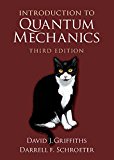 Introduction To Quantum MechanicsPhysicsISBN:9781107189638Author:Griffiths, David J., Schroeter, Darrell F.Publisher:Cambridge University Press
Introduction To Quantum MechanicsPhysicsISBN:9781107189638Author:Griffiths, David J., Schroeter, Darrell F.Publisher:Cambridge University Press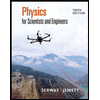 Physics for Scientists and EngineersPhysicsISBN:9781337553278Author:Raymond A. Serway, John W. JewettPublisher:Cengage Learning
Physics for Scientists and EngineersPhysicsISBN:9781337553278Author:Raymond A. Serway, John W. JewettPublisher:Cengage Learning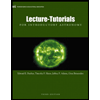 Lecture- Tutorials for Introductory AstronomyPhysicsISBN:9780321820464Author:Edward E. Prather, Tim P. Slater, Jeff P. Adams, Gina BrissendenPublisher:Addison-Wesley
Lecture- Tutorials for Introductory AstronomyPhysicsISBN:9780321820464Author:Edward E. Prather, Tim P. Slater, Jeff P. Adams, Gina BrissendenPublisher:Addison-Wesley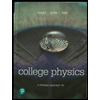 College Physics: A Strategic Approach (4th Editio...PhysicsISBN:9780134609034Author:Randall D. Knight (Professor Emeritus), Brian Jones, Stuart FieldPublisher:PEARSON
College Physics: A Strategic Approach (4th Editio...PhysicsISBN:9780134609034Author:Randall D. Knight (Professor Emeritus), Brian Jones, Stuart FieldPublisher:PEARSON

College Physics
Physics
ISBN:9781305952300
Author:Raymond A. Serway, Chris Vuille
Publisher:Cengage Learning

University Physics (14th Edition)
Physics
ISBN:9780133969290
Author:Hugh D. Young, Roger A. Freedman
Publisher:PEARSON

Introduction To Quantum Mechanics
Physics
ISBN:9781107189638
Author:Griffiths, David J., Schroeter, Darrell F.
Publisher:Cambridge University Press

Physics for Scientists and Engineers
Physics
ISBN:9781337553278
Author:Raymond A. Serway, John W. Jewett
Publisher:Cengage Learning

Lecture- Tutorials for Introductory Astronomy
Physics
ISBN:9780321820464
Author:Edward E. Prather, Tim P. Slater, Jeff P. Adams, Gina Brissenden
Publisher:Addison-Wesley

College Physics: A Strategic Approach (4th Editio...
Physics
ISBN:9780134609034
Author:Randall D. Knight (Professor Emeritus), Brian Jones, Stuart Field
Publisher:PEARSON
GCSE Physics - Vector Diagrams and Resultant Forces #43; Author: Cognito;https://www.youtube.com/watch?v=U8z8WFhOQ_Y;License: Standard YouTube License, CC-BY
TeachNext | CBSE Grade 10 | Maths | Heights and Distances; Author: Next Education India;https://www.youtube.com/watch?v=b_qm-1jHUO4;License: Standard Youtube License